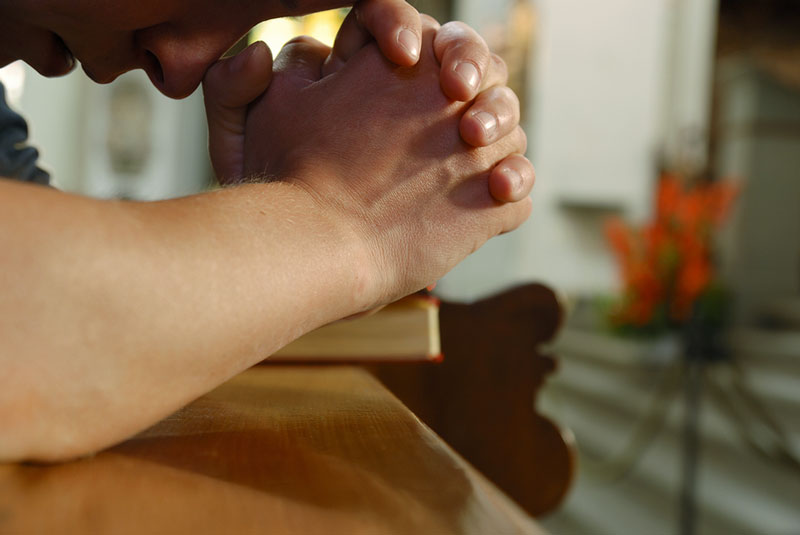
One distinctive mark of the Mass is the sitting, standing, and kneeling that takes place at different moments throughout. Catholic liturgy asks worshippers to conform to certain formal gestures, but can be a point of confusion for non-Catholics who attend a Mass.
Common postures have traditionally been observed out of deference, or respect. When a president enters the pressroom, all reporters stand. Rising tends to show respectful interruption of individual focus redirected to the one who enters.
Common gestures and postures have guided the worship of every culture for millennium. Muslims bow down and face Mecca when they pray while Jews face Jerusalem. For centuries, priest and people alike turned eastward during Mass as a way of looking for the Lord’s return.
The current General Instruction for the celebration of Mass says that common gestures and postures unify a congregation in worship. Whether kneeling while the bread and wine are made the Body and Blood of Christ, or standing as the Lord speaks in the Gospel, believers express their spiritual attitudes and common convictions in the way they conform to agreed upon behaviors.
In the temple there was a wall that separated Jewish worshippers from Gentiles. St. Paul says that Christ tore down that dividing wall of enmity to make all nations one people. The Catholic liturgy celebrates the diversity in unity by linking those of different distinctions in a work of praise for God’s goodness.
The modern world tends to celebrate individuality. As of one month ago every married person must now use an adjective to describe what type of marriage they have.
Words like “ghetto” could potentially be offensive to someone who was raised in one and for the sake of the one possibly offended, everyone must remove such nouns from their lexicon. Americans are constantly subcategorized by political preference, race, income, education level, age, gender and on and on and on.
Humanity is being reduced to adjectives that describe individuality, impulse, preference, and external appearance. In tearing down the wall that can divide humanity, Jesus removed the us/ them thinking from the Christian mentality.
Recently, the Loyal White Knights of the Ku Klux Klan marched at the South Carolina State Capital while the Black Educators for Jus-tice rallied at the same time. Perhaps seeing God’s creation in less restrictive ways will allow harmony.
The first teaching mechanism of the Church is her liturgy. It teaches by unifying humanity into something larger than its individuals and their identities. In each Mass the Lord unifies those who will come, repent, and receive from the table He has spread before us.
When the people of God gather they show conformity to something beyond themselves. Standing, sitting and kneeling together will not alone rid the world of its divisions. The underlying convictions behind these acts of respect, however, reminds believers that they are more than the sum total of their parts.
The United Nations has been attempting to achieve unity for nearly 100 years. The Eucharist has done it for 2,000 years.

